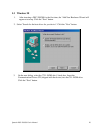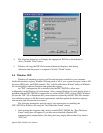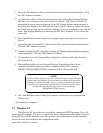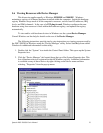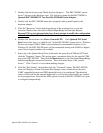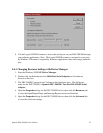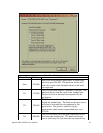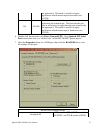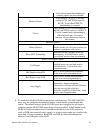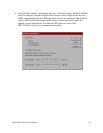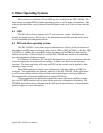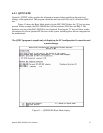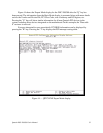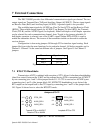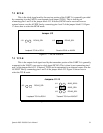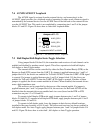
Hardware automatically enables the
transmitters when transmitting.
Transmitters will turn off three bit-times
after the last stop bit of the last
character, regardless of baud rate. Used
in two-wire communication.
Auto Toggle
DTR is set to enable the transmitters.
Used in two-wire communication
Half Duplex using DTR
RTS is set to enable the transmitters.
Used in two-wire communication.
Half Duplex using RTS
Transmitters and receivers are always
enabled; ports can send and receive
simultaneously. Used in four-wire
communication.
Full Duplex
RS-422/485 Duplex Mode
Receivers are only enabled when not
transmitting. In a Half Duplex mode,
you will not receive what you transmit.
When NOT Tranmitting
Receivers are always enabled. In a Half
Duplex mode, you will receive what you
transmit (sometimes called echo).
Always Receive
Receive Control
RTS routed to CTS, AUXIN routed to
RCLK, and TCLK routed to AUXOUT.
Used to connect ports transmitting at
different baud rates. In order to
function, all ports must have and use
this feature.
Clocks
RTS routed to AUXOUT, AUXIN
routed to CTS, and TCLK routed to
RCLK. Used when RTS/CTS
handshaking is required.
Modem Control
Used when external handshaking or
clocking signals are not available.
8. To summarize the RS-422/485 output drivers enable options: The DSC-200/300’s
ports may be configured for either full duplex or half duplex operation with this
option. The default setting is the RS-422/485 ports are configured for full duplex
operation with the RS-422/485 output drivers always enabled. In half duplex mode,
the RS-422/485 transmitter may be enabled and disabled via the RTS (request to
send) or DTR (data terminal ready) signals, or in auto-toggle mode, set to enable only
when data is being transmitted. Both RTS and DTR are controlled through the
Modem Control Register of the 16550.
Quatech DSC-200/300 User's Manual 28



